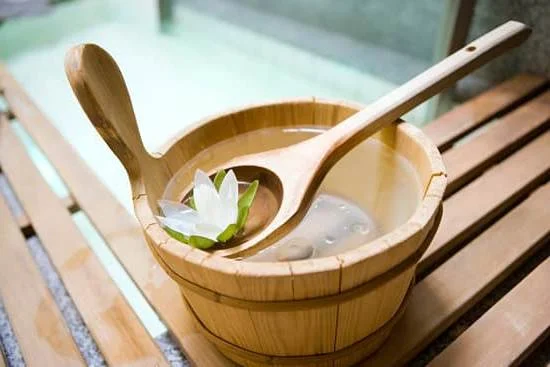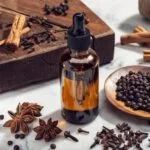How does aromatherapy massage work? Aromatherapy massage is a holistic healing treatment that uses natural plant extracts, known as essential oils, to promote physical and emotional well-being. The therapeutic benefits of aromatherapy have been used for centuries to enhance the body’s natural healing process. This article will explore the science behind aromatherapy, the role of essential oils in massage therapy, and the overall effectiveness of aromatherapy in promoting relaxation and stress relief.
Aromatherapy massage is a form of complementary therapy that combines the natural healing properties of essential oils with the therapeutic benefits of massage. The use of essential oils during a massage session can stimulate the senses and promote relaxation, ultimately leading to improved physical and emotional health. Understanding how aromatherapy massage works requires an understanding of the science behind essential oils and their impact on the mind and body.
Essential oils are highly concentrated plant extracts that have been used for centuries for their medicinal and therapeutic properties. These oils are derived from various parts of plants, including flowers, leaves, stems, and roots, each possessing unique chemical compositions that contribute to their specific healing properties. When these essential oils are applied through massage techniques, they can be absorbed into the skin and enter the bloodstream, allowing for their beneficial effects to take place throughout the body.
The Science Behind Aromatherapy
Aromatherapy is the practice of using essential oils for therapeutic purposes, and when combined with massage, it can enhance both the physical and emotional benefits of the treatment. But how does aromatherapy massage work? Understanding the science behind this practice can help explain its effectiveness in promoting relaxation, relieving stress, and improving overall well-being.
The Olfactory System and Aromatherapy
One of the key mechanisms behind aromatherapy massage is the olfactory system, which involves the sense of smell. When essential oils are inhaled or applied to the skin during a massage, they stimulate the olfactory receptors in the nose. These receptors send signals to the brain’s limbic system, which is responsible for emotions, memory, and behavior. This process triggers various physiological responses that can have a profound impact on mood and overall mental state.
The Role of Essential Oils in Aromatherapy Massage
Essential oils are highly concentrated plant extracts that contain unique compounds with specific therapeutic properties. Each essential oil has its own distinct aroma and chemical composition, which influences its effects on the body and mind.
For example, lavender oil is known for its calming and sedative properties, while peppermint oil is invigorating and can help alleviate headaches. When these essential oils are used in aromatherapy massage, their aromatic molecules are absorbed through inhalation and skin contact, leading to a range of beneficial effects.
The Mind-Body Connection
Aromatherapy massage works by harnessing the powerful connection between the mind and body. As essential oils are inhaled or absorbed into the skin during a massage, they not only influence mood and emotions but also have direct physiological effects on muscles, circulation, and nerves. By promoting relaxation and reducing stress levels, aromatherapy massage can help improve sleep quality, decrease muscle tension, boost immune function, and enhance overall physical well-being.
Understanding Essential Oils and Their Therapeutic Properties
Aromatherapy massage is a popular form of alternative medicine that combines the benefits of massage therapy with the use of essential oils. These essential oils are extracted from various plants and have been used for their therapeutic properties for centuries. Understanding the role of essential oils and their specific effects on the body is crucial in comprehending how aromatherapy massage works.
Essential oils are highly concentrated extracts from plants, and each oil has its own unique composition and properties. For example, lavender essential oil is known for its calming and relaxing effects, while peppermint oil is often used for its invigorating and refreshing properties. When these essential oils are combined with carrier oils and applied during a massage, they can be absorbed through the skin or inhaled, leading to various therapeutic benefits.
The effectiveness of aromatherapy massage lies in the combination of touch therapy and the aromatic compounds present in essential oils. The massage techniques stimulate circulation, relieve muscle tension, and promote relaxation, while the inhalation or absorption of essential oils enhances their healing properties. This holistic approach to healing addresses both physical and mental well-being, making it a popular choice for those seeking natural remedies for stress, pain relief, or relaxation.
| Essential Oil | Therapeutic Properties |
|---|---|
| Lavender | Calming and relaxing effects |
| Peppermint | Invigorating and refreshing properties |
The Benefits of Aromatherapy Massage
Aromatherapy massage offers a wide range of benefits for both physical and mental well-being. The combination of therapeutic essential oils and massage techniques creates a holistic approach to healing and relaxation. The use of essential oils such as lavender, eucalyptus, peppermint, and chamomile can provide specific benefits such as pain relief, improved circulation, and stress reduction.
One of the key benefits of aromatherapy massage is its ability to reduce stress and anxiety. Aromatherapy has been shown to have a calming effect on the mind, and when combined with massage, it can help to relax the body as well. The inhalation of essential oils during the massage can stimulate the limbic system in the brain, which is responsible for emotions and memories, leading to a sense of relaxation and improved mood.
In addition to its mental health benefits, aromatherapy massage also has physical benefits. The use of essential oils during the massage can help to alleviate muscle tension, reduce inflammation, and promote overall relaxation. Different essential oils have different properties that can target specific physical issues, making aromatherapy massage a versatile treatment option for various ailments.
| Aromatherapy Benefits | Description |
|---|---|
| Stress Reduction | Aromatherapy massage can help reduce stress and anxiety by promoting relaxation through the use of calming essential oils. |
| Pain Relief | Essential oils used in aromatherapy massage have analgesic properties that can help alleviate muscle tension and pain. |
| Improved Mood | The inhalation of essential oils during a massage can positively impact mood by stimulating the brain’s limbic system. |
The Role of Aromatherapy in Relaxation and Stress Relief
Aromatherapy is a holistic healing treatment that uses natural plant extracts to promote health and well-being. One of the most common ways that aromatherapy is practiced is through massage, where essential oils are used to enhance the therapeutic benefits of the massage.
The use of aromatic essential oils for relaxation and stress relief can be traced back to ancient civilizations, where they were used for their medicinal properties. In today’s modern world, aromatherapy massage has become a popular alternative therapy for managing stress and promoting relaxation.
How Does Aromatherapy Massage Work?
Aromatherapy massage works by combining the therapeutic properties of essential oils with the healing power of touch. When essential oils are applied to the skin during a massage, they are absorbed into the bloodstream and carried to different areas of the body.
The aroma from the essential oils also stimulates the limbic system in the brain, which plays a role in emotions and influences the nervous system. This dual action of absorption through the skin and inhalation of the aroma makes aromatherapy massage an effective way to deliver the benefits of essential oils throughout the body.
The Effects on Relaxation
The use of specific essential oils with calming properties, such as lavender or chamomile, can help induce a state of relaxation during an aromatherapy massage. These oils have been shown to reduce anxiety levels and promote a sense of calm and tranquility. When combined with gentle massage techniques, aromatherapy can further enhance these relaxing effects by promoting better blood circulation and easing muscle tension.
Stress Relief Benefits
In addition to relaxation, aromatherapy massage can also provide stress relief. Certain essential oils like bergamot, clary sage, and frankincense are known for their ability to help alleviate stress and improve mood. When used in combination with soothing massage movements, these oils can aid in reducing cortisol levels (the stress hormone) in the body while uplifting one’s mood. This combination helps individuals find relief from everyday stresses and promotes overall well-being.
The Process of Aromatherapy Massage
Aromatherapy massage is a popular holistic healing treatment that combines the benefits of touch therapy with the use of aromatic essential oils. This type of massage not only provides physical relaxation and relief from muscle tension, but it also offers a variety of mental and emotional benefits. The process of aromatherapy massage involves specific techniques and methods that are tailored to maximize the therapeutic effects of essential oils on the body and mind.
There are several techniques and methods that can be used in aromatherapy massage to promote relaxation, balance, and overall well-being. Some common approaches include:
- Effleurage: This gentle stroking technique involves long, sweeping movements that help to spread the essential oils across the skin’s surface. It is used at the beginning and end of a massage session.
- Petrissage: This technique involves kneading, rolling, and wringing movements which help to release tension in the muscles while also allowing for deeper absorption of the essential oils into the skin.
- Friction: Circular or transverse movements are used in this method to create heat and increase blood flow to specific areas. This can help to alleviate pain and enhance the therapeutic effects of the essential oils.
In addition to these hands-on techniques, aromatherapy massage also incorporates other methods such as hot stone massage, cupping, and reflexology to further enhance its healing benefits. These techniques work in conjunction with carefully selected essential oils to address specific physical, mental, and emotional issues through aromatherapy massage.
Aromatherapy massage works by harnessing the power of touch therapy along with the therapeutic properties of essential oils. The combination of gentle strokes, pressure points, and fragrant essences helps to create an environment that promotes relaxation, relieves stress, alleviates physical discomfort, and enhances overall well-being.
Whether it’s through promoting better sleep or providing relief from anxiety or depression, aromatherapy massage has been shown to be effective in addressing a wide range of health concerns when performed using proper techniques and methods.
Exploring Different Aromatherapy Oils for Massage Therapy
Aromatherapy massage involves the use of essential oils, which are highly concentrated plant extracts known for their therapeutic properties. These oils are carefully selected based on their unique benefits and are then incorporated into massage treatments to promote relaxation, alleviate stress, and enhance overall well-being. Here are some popular essential oils commonly used in aromatherapy massage:
- Lavender oil: Known for its calming and soothing properties, lavender oil is often used to promote relaxation and reduce anxiety.
- Peppermint oil: With its invigorating and refreshing scent, peppermint oil is used to relieve muscle tension and boost energy levels.
- Eucalyptus oil: This cooling and decongestant oil is commonly used to alleviate respiratory issues and clear the mind.
These essential oils can be blended together or used individually, depending on the client’s needs and preferences. It’s important for massage therapists to have a good understanding of the different aromatherapy oils available and their potential effects on the body and mind.
Another popular option for aromatherapy massage is using citrus oils such as lemon or orange, which are known for their uplifting and mood-boosting properties. On the other hand, floral essential oils like rose or jasmine can be used to evoke feelings of romance and comfort during a massage session.
Incorporating these diverse essential oils into massage therapy allows practitioners to tailor each treatment according to their clients’ specific needs, whether it’s to promote relaxation, provide pain relief, or enhance emotional well-being. Understanding how different aromatherapy oils work can ultimately contribute to the effectiveness of an aromatherapy massage session.
Tips for Incorporating Aromatherapy Into Your Massage Practice
Aromatherapy is a popular complementary therapy that combines the use of essential oils with the healing power of touch. When used in conjunction with massage, aromatherapy can enhance the overall experience for clients and provide additional therapeutic benefits. Here are some tips for incorporating aromatherapy into your massage practice:
1. Selection of Essential Oils: When incorporating aromatherapy into your massage practice, it is important to carefully select the appropriate essential oils based on their therapeutic properties and the desired outcome for the client.
For example, lavender oil is known for its calming and relaxing effects, while peppermint oil may be used for its invigorating and refreshing properties. Understanding the different effects of essential oils will allow you to customize each massage session according to the client’s needs.
2. Dilution and Application: Before using essential oils during a massage, it is crucial to dilute them properly with a carrier oil to ensure safety and effectiveness. The recommended dilution ratio is typically 1-3%, depending on the specific essential oil being used. Additionally, knowing the correct application techniques such as effleurage, petrissage, and friction will help you incorporate aromatherapy seamlessly into your massage practice.
3. Client Consultation: Prior to incorporating aromatherapy into your massage sessions, it is imperative to conduct a thorough client consultation to identify any allergies, sensitivities, or medical conditions that may impact their response to essential oils. By gathering this information, you can tailor the use of aromatherapy to ensure a safe and pleasant experience for your clients.
Incorporating aromatherapy into your massage practice can elevate the overall treatment experience for clients by providing both physical and emotional benefits. Understanding how different essential oils work and mastering proper dilution and application techniques will enable you to harness the full potential of aromatherapy in your massage practice.
Conclusion and Final Thoughts on the Effectiveness of Aromatherapy Massage
In conclusion, aromatherapy massage is a holistic approach to wellness that encompasses the use of essential oils and therapeutic massage techniques. The combination of aromatherapy and massage can have many benefits for both physical and mental health, making it an effective practice for relaxation and stress relief.
The science behind aromatherapy reveals that the inhalation of essential oils stimulates the olfactory system, which then sends signals to the brain, affecting emotions and mood. When combined with massage, the overall experience can be deeply relaxing and rejuvenating.
Understanding essential oils and their therapeutic properties is crucial in the practice of aromatherapy massage. Different oils have different effects, such as lavender for relaxation or peppermint for invigoration. By incorporating these oils into a massage session, clients can experience a more personalized and targeted approach to their wellness needs.
Incorporating aromatherapy into a massage practice may require some experimentation with different oils and techniques, but the potential benefits for clients are evident. By understanding how specific essential oils work and applying them in conjunction with various massage methods, practitioners can provide a unique and effective experience for their clients. Ultimately, aromatherapy massage offers a natural way to promote relaxation, alleviate stress, and enhance overall well-being.
Frequently Asked Questions
Is Aromatherapy Massage Worth It?
Aromatherapy massage can be worth it for those seeking a holistic approach to relaxation and healing. The use of essential oils can enhance the therapeutic benefits of the massage, providing a more immersive sensory experience.
What Is the Difference Between a Normal Massage and an Aromatherapy Massage?
The main difference between a normal massage and an aromatherapy massage is the incorporation of essential oils. These oils are chosen for their specific therapeutic properties and are used to enhance the overall massage experience, addressing both physical and emotional concerns.
What Are the Disadvantages of Aromatherapy Massage?
Some disadvantages of aromatherapy massage include potential allergic reactions to essential oils, especially for individuals with sensitive skin or respiratory conditions. Additionally, there may be limited scientific evidence supporting some of the health claims associated with aromatherapy. It’s important to consult with a trained professional before undergoing this type of massage to ensure safety and efficacy.

Are you looking for a natural way to improve your health and wellbeing?
If so, aromatherapy may be the answer for you.





